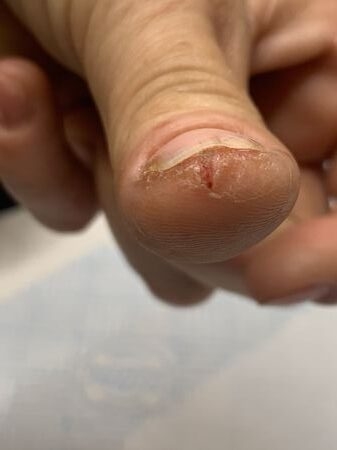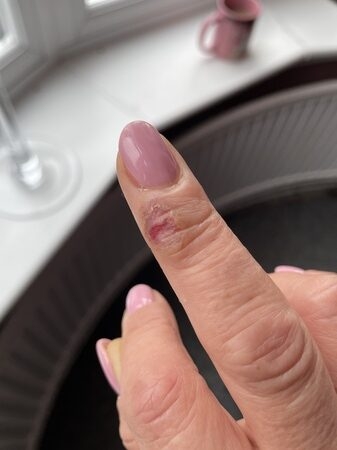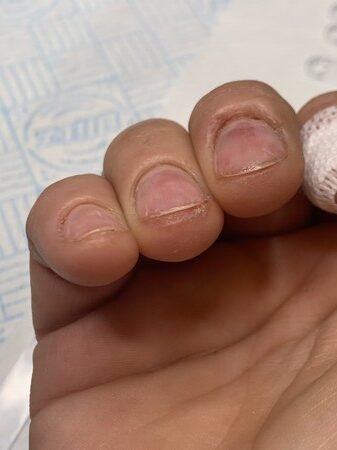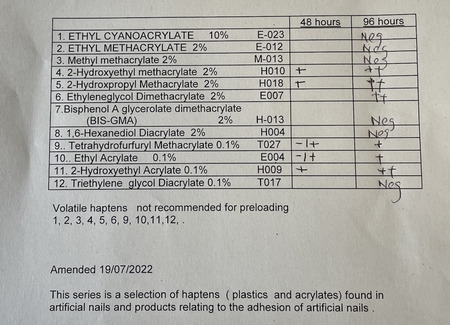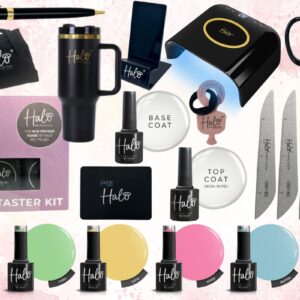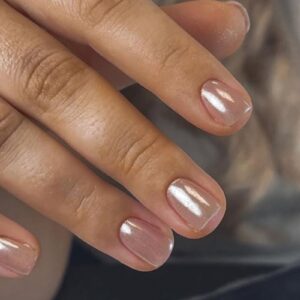
HEMA: What is it, why is it used in nail products & is it to blame for allergies?
By Katie Barnes | 05 November 2024 | Expert Advice, Feature

What is HEMA?
HEMA, also known as 2-hydroxyethyl methacrylate or hydroxyethyl methacrylate, belongs to the monomer family and is used as an adhesive in nail products. Having an adhesive property in the product is important to prevent service breakdown. When alternative ingredients are used, using a coarser grit file can be necessary to ensure adhesion, in turn having its own issues and causing potential damage to the nail plate.
The nail industry is not the only field that uses this ingredient. It is widely used by dentists and orthopaedic surgeons. It is also used in 3D printing and many other application methods.
One of the top published nail allergens is HEMA, but is HEMA really deserving of being villianised? The reason that this ingredient may be reporting more allergies than others is because the molecular size of HEMA is very small and can be absorbed into the skin and nail plate more easily than others. Any suspected or confirmed allergens to nail ingredients such as HEMA must be reported to your dentist or GP.
What causes an allergy and how can this be prevented?
An allergy builds up over time from overexposure of repetitive skin contact with an allergen (in this case, usually an ingredient in nail products), starting off as irritation and redness. This can occur with any chemical ingredient for other purposes not designed and recommended against skin contact.
We are all human and mistakes can happen and on a rare occasion skin contact can occur – you slip, your client moves, you drop your brush or any other accidental application error. This kind of skin contact can be unknown, such as dropping a brush on yourself and the product leaking through your uniform or clothes to contact your skin.
How you deal with any contact is important, and ensuring this doesn’t become a habit or regular occurrence is critical, in order to prevent an issue arising.
If product comes in contact with the skin, it is essential this product is removed completely and thoroughly and the client washes their hands or contact area, before reapplication, rather than just tidying this up and leaving unseen but uncured product on the skin to continue causing a potential reaction. It is also good practice to replace your gloves in case of product transference. As well as thoroughly removing any product with cleanser or IPA, it is important to remove and replace any contaminated or suspected gloves or clothes too. For this reason, always keep a change of clothes or wear aprons at work.
Wearing the correct gloves that protect against the chemicals you use for the correct time will be a huge contributor to preventing any skin contact. Did you know that many gloves are not chemically resistant to acetone, monomer, gel remover and IPA? This is because there any so many different industries out there needing chemical resistance to a multitude of different ingredients, that one glove cannot possibly protect against them all.
Learn how to select the right gloves to guarantee protection against the right chemicals and for the right time for you here.
Will changing to HEMA-free products prevent an allergy?
When you develop any allergy, you become allergic to one ingredient. Some clients and pros report an allergy to HEMA, but this is not the only ingredient that causes allergies to nail product users.
While you can change to a product no longer containing this allergen, if you don’t change the working technique, an allergy can occur with another ingredient, and it will become a vicious cycle. Once an allergy develops, the immune system goes onto heightened alert, so it becomes much easier and faster to develop allergies to other allergens.
Just like if we don’t wear gloves when doing household cleaning, using some products will develop contact dermatitis which is an irritation, but can turn into an allergy with repetitive contact. It is not the fault of the product. It is the working ways that caused it and need to change.
HEMA is not the only allergen identified on nail technician and nail customer dermatologist tests. Many that present an allergy to HEMA, also have an allergy to many other acrylates and HEMA-free alternative ingredients too. Allergens to different ingredients may present differently, so it is important to look for different signs and symptoms.
When it comes to allergies, the most important thing to do is address what caused the allergy and get to the bottom of that, to prevent any further issues down the line and prevent the allergy and irritation from worsening, rather than changing to a HEMA free product or re-branding. The first step to this is booking a private allergen test with a dermatologist and changing any working ways contributing to the allergy.
To learn more about allergies from identifying an irritation or allergy, the steps to take when you suspect an allergy and how to prevent allergies in the nail salon, click here.
Love Katie B x
Images below show an allergic reaction on the fingers of a nail professional. Following the results of an allergy test, the pro began using products without the ingredients she was allergic to, and wore the correct gloves. She is now able to wear enhancements again and perform nail services without issue.

Read the latest issue



